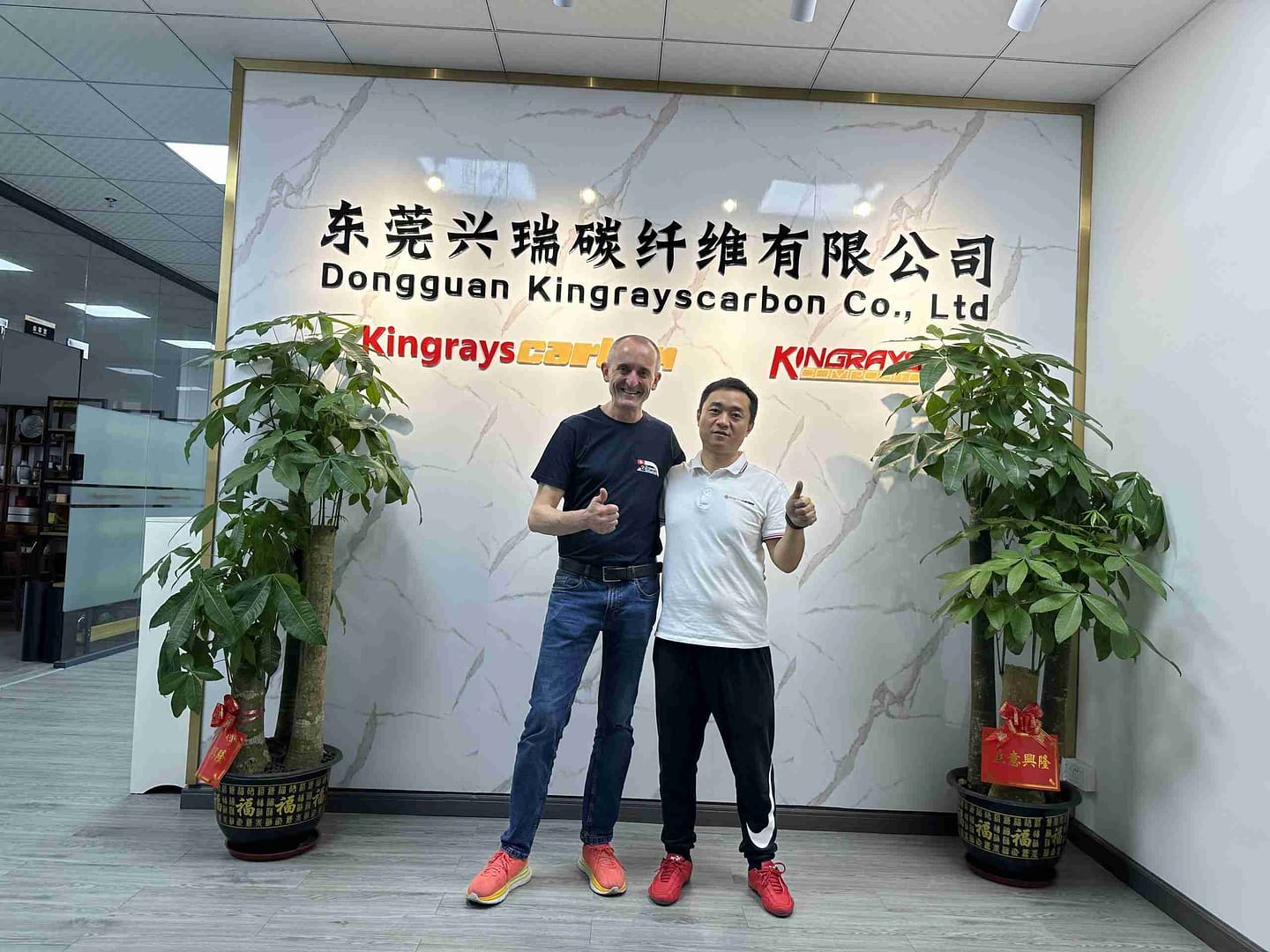
Carbon fiber tubes boast an outstanding strength-to-weight profile ideal for high-demand uses where durability and mass reduction are vital
Created through the consolidation of carbon fibers and a polymer resin matrix, these tubes provide a robust composite solution
High-quality aligned carbon strands grant exceptional tensile performance and stiffness, and the lightweight resin helps minimize mass
The unique pairing of high strength and low weight empowers development of structural designs that are both durable and lightweight
Carbon fiber tubing is applied in aerospace, automotive, athletic equipment and healthcare device construction
Aerospace use of carbon fiber tubes results in reduced airframe weight for fuselages and wings, raising fuel efficiency and performance
Vehicle manufacturers use carbon fiber tubing for suspension links and chassis bracing to achieve better handling and lighter vehicles
Square carbon fiber tubing delivering engineered dimensional accuracy and structural resilience
In applications demanding low mass and strong structural behavior, carbon fiber square tubes are increasingly favored by engineers
Precision fabrication produces square tubes with strong mechanics and versatile integration across different design requirements
Constructed by embedding woven or unidirectional fibers in resin, these tubes show notable resilience to compressive and tensile stresses
Their rigid nature enables square carbon fiber tubes to perform reliably in integrity-critical structural uses
Used for aerospace sections, vehicle chassis reinforcements and high-performance sports equipment, these tubes ensure dependable performance under stress
Their reduced weight also helps achieve better fuel efficiency and improved overall system performance
- In addition, tight dimensional tolerances simplify integration into complex systems and reduce adjustment-related costs
- Thus, industries that target advanced performance and efficiency increasingly rely on square carbon fiber tubes
Rectangular carbon fiber sections designed for tailored configurations and superior results
Its excellent strength-to-weight profile and stiffness qualify carbon fiber for a wide range of demanding engineering roles
Rectangular and prismatic carbon fiber tubes in particular deliver superior performance because of their engineered geometry
Custom-designed rectangular carbon fiber tubes ensure specified structural robustness and precise mechanical capacity
Fabricators are able to manufacture high-precision rectangular carbon fiber tubes for aerospace, sporting and industrial applications
Flexible fabrication options encourage inventive solutions that maximize system performance and operational functionality
Carbon fiber plate technology providing superior stiffness and impact resilience
High stiffness characterizes carbon fiber plates, qualifying them for heavy-duty load applications
Carbon fiber plates composed of fibers in a resin matrix deliver exceptional protection against bending and deformation
Their high impact resistance and toughness comes from the carbon fibers’ ability to absorb energy without catastrophic failure
State-of-the-art composite solutions: carbon fiber tubing combined with plate elements for peak performance
Advanced applications often choose CFRP tubes and plates for their high mechanical performance and favorable strength-to-weight balance
Suitable for a broad range of industries, these lightweight yet strong composites are used in aerospace, automotive, sports and consumer-specialized products
Complex shapes and tailored geometries can be produced while maintaining the materials’ stiffness and endurance, offering design flexibility
Improvements in production methods have increased cost-effectiveness and scalability, enabling wider industry access
Carbon fiber’s benefits over traditional materials include higher strength and reduced weight for optimized structural solutions
Corrosion- and fatigue-resistant properties extend operational life and reliability for carbon fiber components in harsh environments
The superior properties of carbon fiber composites inspire ongoing innovation and future-focused engineering advancements
Examining how carbon fiber tubes and plates are applied across industries
Robust carbon fiber tubes and plates have earned widespread traction and recognition in a variety of sectors
Their outstanding strength-per-weight and mechanical behavior make these materials fit for many practical uses
The aerospace, automotive and construction industries commonly utilize these materials for strong, lasting structural components
Athletic equipment makers use carbon fiber tubes and plates in bikes, clubs and racquets to boost performance through reduced weight and higher stiffness
Medical applications increasingly adopt carbon fiber for prosthetics, instrument components and assistive technologies
Lightweighting strategies using carbon fiber tubes, plates and related components
By employing carbon fiber tubes and plates, engineers cut weight substantially without sacrificing structural integrity
Common tube applications include lightweight, stiff structures such as bicycle frames and turbine blades
Carbon fiber plates offer structural stiffness and impact resilience for aircraft and spacecraft components needing stable load-bearing performance
Cutting-edge material science expanding carbon fiber capabilities
Carbon fiber stands as a material breakthrough renowned for exceptional strength and toughness
Its remarkable performance derives from thin fibers embedded in a polymer matrix, creating a blend of lightness and strength
Increasing applications in aviation and automotive result from the performance and fuel-efficiency gains tied to weight reduction
The automotive industry leverages carbon fiber to construct lighter, stronger vehicle components that enhance handling and safety
The versatility of carbon fiber spans aerospace and automotive structures and many other fields
Carbon fiber’s impact on aerospace and automotive stems from its ability to combine high strength with low mass
Low weight permits building vehicles and aircraft that combine high performance with fuel efficiency and long-term durability
In automotive applications carbon fiber integrates into body panels, chassis parts and sometimes full structural frames to lower weight and boost performance
These carbon fiber components keep extending the limits of modern engineering
Using carbon fiber tubes and plates enables industry-wide transformations based on their superior strength-to-weight ratios
Lightweight yet durable carbon fiber components are applied in sectors where performance and weight savings are essential, such as aerospace, automotive and healthcare
As an example, aerospace integration of carbon fiber parts results in significant fuel savings and better aerodynamics
Vehicle designers use carbon fiber to cut mass and thereby improve acceleration, driving dynamics and efficiency
- Proper leveraging of carbon fiber involves understanding its performance attributes, manufacturing constraints and trade-offs in design Effective use depends on understanding the material’s behavior, manufacturing limits and design trade-offs Effective use depends on understanding the material’s behavior, manufacturing limits and design trade-offs To maximize benefits, designers must carbon fiber plates understand carbon fiber mechanics, manufacturing restrictions and the trade-offs involved
- Growing research and deployment point to a promising future for carbon fiber components
- Sustained R&D will continue to evolve performance and open additional application pathways
- Therefore, carbon fiber materials will likely assume an ever-growing role in engineering and industrial production
Practical pathways to unlocking carbon fiber’s maximum performance potential
Carbon fiber has become a top-tier material for improving performance across many applications due to its high strength-to-weight and stiffness advantages
Explore material properties, use cases and methods for integrating carbon fiber to maximize design outcomes
Across automotive, aerospace, sporting and electronic applications, carbon fiber’s versatility enhances performance outcomes
Effective deployment calls for a clear grasp of the material’s behavior, how it is fabricated, and the design trade-offs required
The diverse range of industries where carbon fiber is making a significant impact.